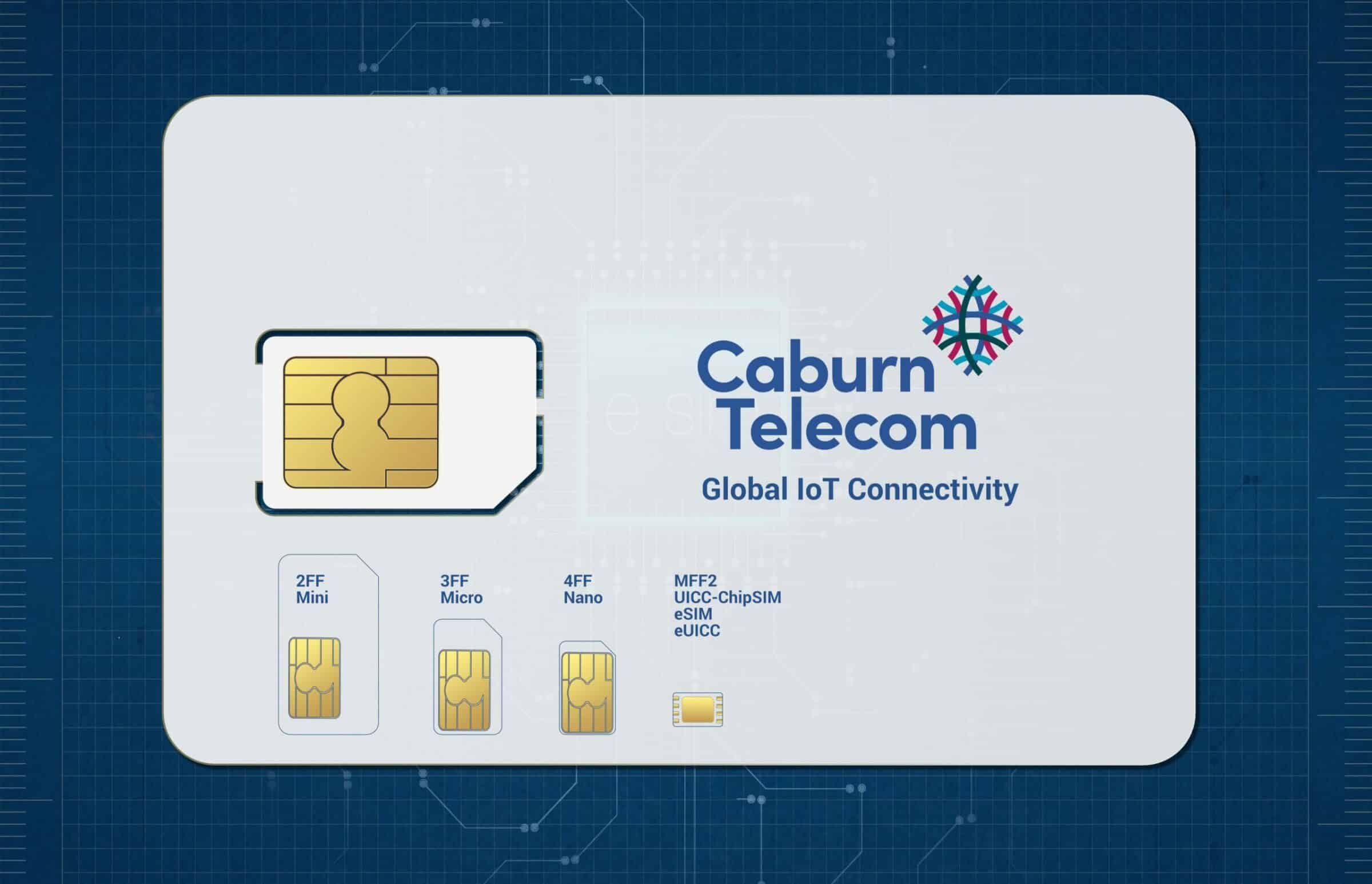Available carriers: There are four licensed radio mobile networks used for cellular connectivity in the UK; EE, Vodafone, O2 & 3, who are all classed as UK Mobile Network Operators (MNOs). These networks are in competition with each other and typically sell connectivity via their rolling SIM 12 month contract(s) [or a pay per month for 24 months].
Multi-network Internet of Things (IoT) devices, need to legitimately register with one of these networks if they wish to connect to mobile services from cellular networks in the UK. Most IoT devices require multi-network systems. Primarily due to the need to supply geographically resilient, ubiquitous access for devices that cannot afford to move into a single-network void spot and become disconnected.
This is important as a device that cannot connect, will lose its service and if static may never connect or require a visit or redeployment to correct. IoT devices are therefore designed to select the strongest signal or best network available, based on their device logic, location, region or availability.
Recommended reading: A Guide to IoT Connectivity, IoT SIM Cards & Multi-network Systems
Network Technologies & IoT SIM Cards
2G & 3G Technologies
UK mobile operators bid for parts of the radio network spectrum based on specified lots that are released by the UK government. This is usually based on generations of technology. While the main use case has historically been consumer mobile phones, of increasing importance is revenues from IoT devices. While new mobile phone releases provide varying degrees of access to these generations of technology, this issue also affects IoT devices. This can also be manifested in thee types of modems they use and the various generations IoT SIMs and the types of cellular IoT coverage they can access.
For example, 2G, 3G, 4G and 5G stand for successive generations of mobile spectrum and technologies. 2G principally being a voice and messaging technology, while subsequent technological releases introduced packet data services in increasing bandwidth and data rates. Indeed, when introduced, both 2G and 3G were mainly circuit-switched technologies that relied on end-to-end connections being made for voice services and their serving traditional core switch-based networks.
4G and IP Core Systems
As internet technologies developed, core networks transitioned into data-centric Internet Protocol (IP) based networks that relied upon data routing and high-capacity fibre networks. The Long-Term Evolution (LTE) of mobile systems, similarly, needed to evolve to reflect the increasing demand and capability of devices to connect to the internet. 4G was therefore developed to reflect the need for faster data speeds over the radio networks. This did not replace the 2G and 3G spectrums, however, as they were needed to support voice calls, SMS, and legacy data systems such as GPRS.
2G & 3G Sunsetting in the UK
As 4G LTE systems have developed and 5G systems are deployed, 3G and 2G systems are being reduced in terms of their capability. In some cases, their spectrum farmed towards the newer technologies. Ultimately, the decision to switch off 2G and 3G systems, however, remains a commercial decision for each of the four mobile network operators.
IoT SIM Card UK 2G & 3G: Current Status (February 2024)
UK 2G and 3G Networks:
Vodafone and EE are now in the process of closing their 3G networks. Our network testers confirm that there is no 3G service in much of the country on these networks. O2 UK has indicated 3G switch off will begin in 2025 ‘3’ are phasing out their 3G network and aim to switch it off by the end of 2024.
EE has confirmed it plans to close the network in the next decade. Vodafone has indicated its 2G network will remain open for now but with plans to complete closure by 2033. O2 UK Limited has indicated ending its 2G service in 2033
Low Power Wide Area Access and LTE-M/CAT M1/NB-IoT
Long Term Evolution (LTE) systems seek to replace narrowband (2G) services. Increasingly used by IoT devices by implementing long-range, low-power usage systems such as CAT M1, LTE-M and NB-IoT that form part of the long-term evolution standards of 4G/5G. These systems offer the benefit of long-range connections while also forming part of the LTE technology frameworks.
Many IoT device and IoT service providers are therefore investing in LTE low power and 4G technologies to ensure they remain aligned with the major network infrastructure moving forwards. With data-only devices, this is relatively straightforward, provided that LTE low-power technologies are available in the areas that are being deployed.
Deployments in the UK, however, remain sketchy and do not as yet provide universal coverage. IoT service providers need to be careful, as sometimes modems can be specialised variants that are either/or, and therefore unable to offer the flexible and ubiquitous service desired.
5G Systems & AI
While 4G and LTE are proving the mainstays of IoT technology use in the UK, 5G is supplying some interesting potential use cases and alternatives. 5G is not widely available and there are debates as to whether it will ever be rolled out across all geographies in the UK. The higher data rates possible with 5G systems will clearly help those systems that use lots of data and tend to be rooted in cities. The very low latency potential of these systems, however, also provides the opportunity to develop more sophisticated systems and eco-systems around certain applications. For example, many IoT systems have been built around monitoring and diagnostics. The ability to make two-way interactions in real-time does pose a likely step change in the way IoT is used. This, however, places the responsibility of control in the hands of the central cloud eco-systems which may be dealing with complex interactions.
In the case of traffic or building control, it does raise ethical questions around the risk, benefit, governance and reliability of the technology and artificial intelligence. AI poses great opportunities around creating innovation in diagnostics and treatments such as healthcare. It does also mean, however, that these systems require strong governance and restrictions to ensure they are used appropriately. Nonetheless, 5G systems generally provide greater opportunities for all users of mobile technologies. Offering the ability to support greater numbers of users in densely populated or congested areas. Also offering the ability for private networks to be deployed on private land or buildings so long as they do not interfere with public MNO networks.
IoT Devices, IoT SIM Cards & IoT Roaming Agreements
IoT devices are designed to communicate with types of technologies, be it 2G, 3G, 4G or 5G or combinations of them. This is largely dependent upon the hardware and firmware system and the type of modem employed within the device. It is also dependent upon the types of mobile roaming agreements in place.
This element is decided by the IoT SIM card and the core MNO/MVNO Systems and infrastructures. IoT SIM card UK providers such as Caburn Telecom provide the surety of long-term agreements with each of the mobile network operators or core roaming partners. This ensures that IoT devices can legitimately connect to available radio networks. Establishing themselves on the network’s Visitor Location Register (VLR) with agreed, expected data rates, pricing and billing criteria fulfilled. In the UK, this means that IoT devices can connect to all 4 networks or a subset of them if a lower-price communications plan option is desired. It also means that these far-flung and somewhat autonomous IoT devices can be monitored, and any anomalies flagged and corrected in good order by the operators.
UK Network Coverage & Network Evolution
The coverage available in the UK amongst all four networks is a high percentage of the population. IoT devices, however, are more likely to be installed or move into network voids for one or more of the networks, due to being in rural spots, indoors or underground.
In these settings, being able to connect to several networks is of premium value and can mean the difference between a successful service and one that fails. Indeed, 2G and then 3G have been the stalwarts of IoT connectivity for several years due to their lower radio frequency and as a result longer range. 2G and 3G networks, however, are under pressure as MNOs invest in their LTE and 5G infrastructures.
Voice IoT SIM Cards
Many voice IoT devices tend not to be as well-known and standard as the major mobile phones and therefore require further evaluation, diligence, and technical approvals. This is also because they are often used in supplementary ways to the simplest forms of IoT data throughput and require further infrastructure and monitoring. They are part of a safety system, critical user emergency service or operator/user intervention system.
Applications that require voice can be more complex. VoIP or VoLTE services also often require the MNO to recognise the device as an approved version, allowed to utilise this service on its network. Multi-Network VoLTE is on the near horizon but requires roaming providers to implement core infrastructure changes to support the functionality with compliant MNOs.
Types of UK Data IoT SIM Cards Available for IoT Solutions
Single Network Variants for IoT Project(s)
While the majority of IoT SIM cards in use are multi-network in nature, there are applications which lend themselves to single-network variants. This is most typically where very large data is required and there is known good coverage in the fixed location where the device is to be situated. Most, however, are multi-network and the most critical systems will use dual-core systems to ensure that risks of single points of failure are minimised or eliminated.
IoT Data SIM Card UK Form Factors
Both forms of SIM cards are available in the 2FF, 3FF and 4FF formats as well as the embedded forms (MFF2) embedded onto printed circuit boards. For further flexibility, SIMs can be provided in combi or trio form. Where SIM cards can be delivered with the capability to be broken down into 2FF, 3FF or 4FF once the required format for the device is known.
IoT eSIM UICC & eUICC Forms Available for IoT Deployment(s)
Plastic and embedded IoT SIMs are also available in UICC and the eSIM eUICC formats. Offering the prospect of changing SIM MNO or MVNO (virtual operators) profiles post-delivery and deployment. While this is technically achievable due to the availability of GSMA harmonisation, the license fees and commercial agreements needed between operators do mean that changing profile is more complex. Whether you can change the profile depends upon eUICC inter operator agreements.
Many IoT providers, therefore, are using eUICC bootstrap profiles as a way of futureproofing, without a yet clear pathway for how or why they would look to change profiles post-deployment. This means that there is a cost for building in this facility, without the certainty that the switching of the credentials will be needed or ever utilised. Given that IoT devices tend to be highly dispersed and often in hard-to-reach assemblies or installations, many feel that this is a price worth paying.
Roaming from the UK with UK IoT SIM Cards (Global Coverage)
While many IoT devices will remain located or static in the UK for their entire life, many will also need to connect to mobile networks in other countries. This can be for a disparate range of reasons. For example, the movement of vehicles, goods or assets, the deployment of manufactured goods in intended territories. Their redeployment, or the movement of people and their consumer devices such as wearables.
One of the benefits of multi-network systems is that they cater for these known contexts or situations. Indeed, IoT service providers can plan and understand the tariffs in the regions where they expect their devices and systems to be used. In most cases, multi-network roaming systems stand for a reciprocal trade system and are suitable means for connecting devices that cross borders or are deployed permanently in a country. Single-Network IoT SIMs may ned roaming capability enables to function abroad and price agreements may not have been factored in up-front.
There are, however, some mobile operators and government restrictions that apply in certain areas. It is therefore important to understand these potential restrictions and their likely impact on the service for IoT applications. For example, while permanent roaming is tolerated to a certain scale, in very large-scale deployments in regions such as the USA, it is wise to seek device approvals. A MVNO, such as Caburn Telecom which has direct IoT agreements with the major MNO operator(s) in many such countries. This means that such primary MNO connections are assured, while the use of roaming SIMs can if needed be limited to a secondary or back-up status in these contexts.
About Caburn Telecom
Caburn Telecom is a global leader in IoT solutions, offering our clients a comprehensive and experienced service. With a focus on the development of advanced mobile connectivity solutions and associated SIM management systems and IoT platform. Caburn Telecom is dedicated to delivering flexible and high-service connectivity for our clients. To learn more about IoT connectivity to the UK networks; (EE, Vodafone, 3 & O2), industrial IoT, IoT application use cases and our SIM card solutions and SIM card pricing and features, please contact us today. We not only provide multi network IoT SIM cards but also single-network variants. For example our EE IoT data SIM or unlimited Vodafone SIM cards for very high data applications.
Frequently Asked Questions:
What is an IoT SIM card?
An IoT SIM card, also known as a Machine-to-Machine (M2M) SIM card, is a specialized type of SIM card specifically designed for Internet of Things (IoT) devices. These devices, ranging from smart meters to connected cars, require a reliable and secure connection to transmit data over cellular networks. The IoT SIM card enables seamless connectivity by providing a unique identifier for each IoT device and allowing it to communicate with other devices and the internet. With features like low power consumption and extended durability, these SIM cards are tailored to meet the specific requirements of IoT applications. Whether it’s tracking assets, monitoring environmental conditions, or enabling remote control, IoT SIM cards play a crucial role in facilitating communication between IoT devices and the digital world.
Please read our detailed beginner’s guide here.
How much is IoT SIM UK?
How much does an IoT SIM cost in the UK? As the Internet of Things continues to revolutionize various industries, the need for reliable and affordable connectivity is becoming increasingly important. Whether you’re looking to connect a fleet of vehicles, monitor smart devices, or track assets, an IoT SIM card is essential. In the UK, the cost of an IoT SIM card can vary depending on your requirements and the provider you choose. Factors such as data allowance, network coverage, and contract length can all influence the prices. It’s best to compare different providers and their offerings to find the most cost-effective solution for your IoT needs. Please contact us to learn more about our pricing.
Can I use an IoT SIM card in my phone?
IoT enables devices to connect and communicate with each other, making our lives more convenient and efficient. One common question that arises is whether an IoT SIM card can be used in a regular smartphone. The answer to this is both simple and complex. While an IoT SIM card can be inserted into a phone and APN settings changed, it may not provide the same level of connectivity and functionality as a consumer SIM card designed for mobile phone use. That is because IoT SIM cards and their communications plans are configured for the required parameters and commercial agreements of the IoT use case.
Which SIM card is best in UK?
When it comes to choosing the best SIM card in the UK for non IoT use cases and specifically for use in mobile phones, there are several factors to consider. From network coverage and data speeds to pricing and customer service, finding the right SIM card can greatly enhance your mobile experience. One of the top contenders in the market is EE, renowned for its extensive coverage and reliable network. With a range of flexible plans, from pay-as-you-go to monthly contracts, EE offers competitive pricing and excellent data packages. Vodafone also consistently stands out as a reliable option. With its extensive coverage, excellent customer service, and a wide range of plans, Vodafone UK is also a good network choice. Their consistent investment in network infrastructure ensures that users experience a seamless connectivity experience across the country. Another notable option is Three, which prides itself on its generous data allowances and budget-friendly deals. Boasting a strong network and attractive perks such as free roaming in certain countries, Three is a popular choice for affordable yet reliable connectivity. Lastly, O2 is an option to consider, particularly for those who prioritize customer service and additional perks like priority access to concert tickets. Known for its substantial network coverage and excellent call quality, O2 offers a variety of plans to suit different needs and budgets. Ultimately, the best SIM card in the UK depends on your individual requirements and preferences, so it’s worth carefully evaluating the different options to find the perfect fit for you.


